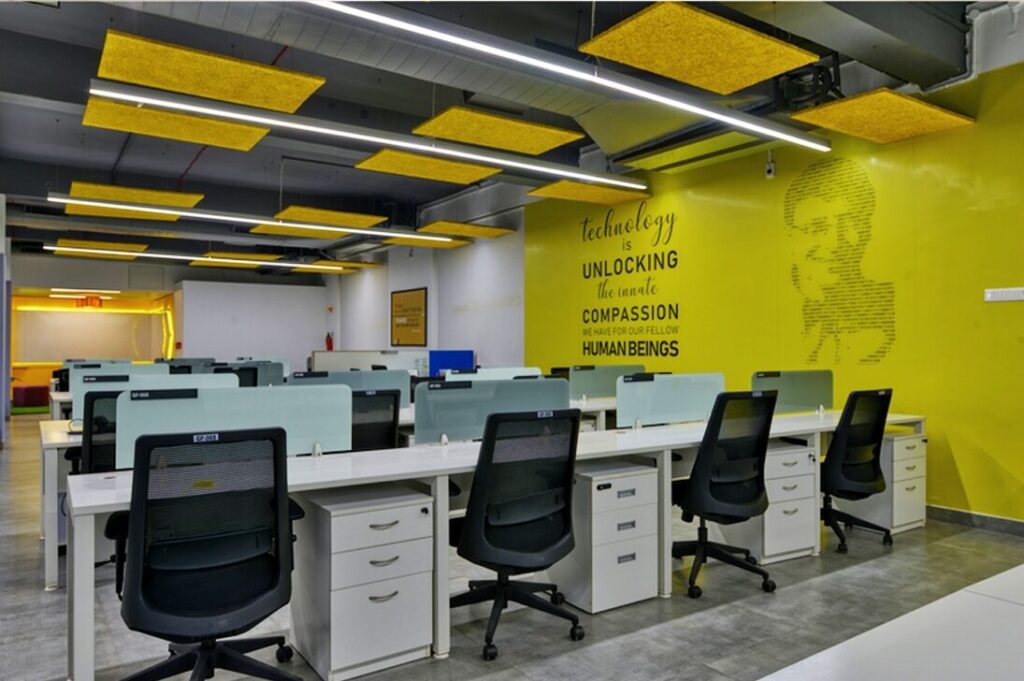Cost of Raised Access Flooring vs. Traditional Flooring
Introduction
When it comes to flooring solutions, two main options dominate the market: raised access flooring vs. traditional flooring. Raised access flooring refers to an elevated floor system composed of individual floor panels supported by a grid of pedestals. Traditional flooring, on the other hand, includes materials like hardwood, carpet, vinyl, or tiles installed directly on the subfloor. Both options offer distinct advantages and come with their respective costs.

2. Understanding Raised Access Flooring
Raised access flooring is a versatile and adaptable solution widely used in commercial and data center environments. It provides an elevated platform that conceals various services such as electrical wiring, data cables, HVAC, and plumbing. The primary components of raised access flooring include floor panels, pedestals, stringers, and accessories. The panels are available in various materials, including steel, woodcore, and calcium sulfate, catering to different load-bearing requirements.
3. Advantages of Raised Access Flooring
Raised access flooring offers several advantages that contribute to its growing popularity in diverse industries. Some key benefits include:
- Flexibility and Adaptability: Raised access flooring allows easy reconfiguration and modifications of the floor layout, accommodating changes in technology, equipment, or space requirements.
- Concealed Services: The space beneath the raised access floor provides a hidden pathway for managing cables, wires, and utilities, resulting in a cleaner and more organized workspace.
- Improved Airflow: The raised floor design facilitates the circulation of conditioned air, enhancing ventilation and cooling efficiency, particularly in data centers and server rooms.
- Enhanced Acoustic Performance: By minimizing sound transmission and reducing noise levels, raised access flooring creates a quieter environment, especially in offices or areas with high foot traffic.
4. Cost Factors of Raised Access Flooring
When assessing the cost of raised access flooring, it’s essential to consider various factors, including:
- Flooring Material: The choice of flooring material impacts the overall cost. Different materials vary in price and performance characteristics, allowing you to select the most suitable option for your specific needs.
- Floor Height: The required floor height influences the number of pedestals and amount of material required, directly affecting the cost of the raised access flooring system.
- Installation Complexity: Factors such as the site conditions, existing infrastructure, and project timeline can affect the installation complexity and, consequently, the cost.
- Maintenance and Longevity: Raised access flooring generally requires minimal maintenance. However, the lifespan of the flooring system can vary based on the material used, which can influence long-term costs.
5. Traditional Flooring Options
Traditional flooring encompasses a wide range of materials, each with its own characteristics and cost considerations. Some commonly used traditional flooring options include:
- Hardwood Flooring: Known for its durability and timeless appeal, hardwood flooring can be a higher initial investment but offers long-term value and elegance.
- Carpet Flooring: Carpet is a popular choice due to its comfort, noise reduction qualities, and affordable pricing options. However, it may require more frequent maintenance and replacement compared to other options.
- Vinyl Flooring: Vinyl flooring is a cost-effective alternative that mimics the appearance of natural materials while offering durability and ease of maintenance.
- Tile Flooring: Tiles are versatile and available in various materials such as ceramic, porcelain, or natural stone. They provide a wide range of design options but may require professional installation.
6. Comparing the Costs of Raised Access Flooring and Traditional Flooring
To make an informed decision, it’s crucial to evaluate the cost comparison between raised access flooring and traditional flooring. While the initial cost of traditional flooring options may seem lower, it’s essential to consider the long-term expenses and potential drawbacks associated with each option. Raised access flooring offers a comprehensive solution that can lead to cost savings and increased functionality over time.
7. Factors Influencing Traditional Flooring Costs
When determining the cost of traditional flooring, several factors come into play, including:
- Material Selection: Different flooring materials have varying costs, and premium options may require a higher investment.
- Installation Complexity: The complexity of the installation process can affect labor costs and the overall project timeline.
- Maintenance and Replacement: Some flooring options may require more frequent maintenance or replacement, adding to the long-term costs.
Conclusion – Cost of Raised Access Flooring vs. Traditional Flooring
In conclusion, selecting the right flooring solution involves careful consideration of various factors, including cost. Raised access flooring offers numerous benefits such as flexibility, enhanced airflow, and concealed services. While traditional flooring options may appear more cost-effective initially, raised access flooring’s long-term advantages can outweigh the initial investment. By assessing the specific requirements of your space and evaluating the long-term costs, you can make an informed decision that aligns with your needs and budget.
Frequently Asked Question- Cost of Raised Access Flooring vs. Traditional Flooring
- Is raised access flooring suitable for residential applications?
Answer: Raised access flooring is primarily designed for commercial and data center environments due to its unique features and requirements. It may not be the most practical choice for residential applications. - Can I install raised access flooring myself?
Answer: Installing raised access flooring requires specialized knowledge and expertise. It is recommended to consult professionals or experienced contractors for proper installation. - Are there any limitations to the flooring material choices for raised access flooring?
Answer: Raised access flooring systems support a wide range of flooring materials, allowing you to choose from various options, including carpet, vinyl, laminate, or even natural stone. - Do traditional flooring options offer similar flexibility to raised access flooring?
Answer: Traditional flooring options are relatively fixed and do not offer the same level of flexibility and adaptability as raised access flooring. - Which flooring option is more cost-effective in the long run?
Answer: While the initial investment for raised access flooring may be higher, its long-term benefits such as easier maintenance, reconfiguration possibilities, and extended lifespan can result in cost savings over time.
Other Products

Wood wool board

Pet polyester acoustic panels

Magnesium oxide board
Contact Us
Mobile: +919008400701 / 705
Email: sales@jayswalgroup.com

Visit Us
Address:
#6, 10th B Cross, Jayswal Center, KHB Main Road, Kaveri Nagar, Kanakanagar, RT Nagar, Bangalore – 560032, Karnataka, India.
Other Websites: